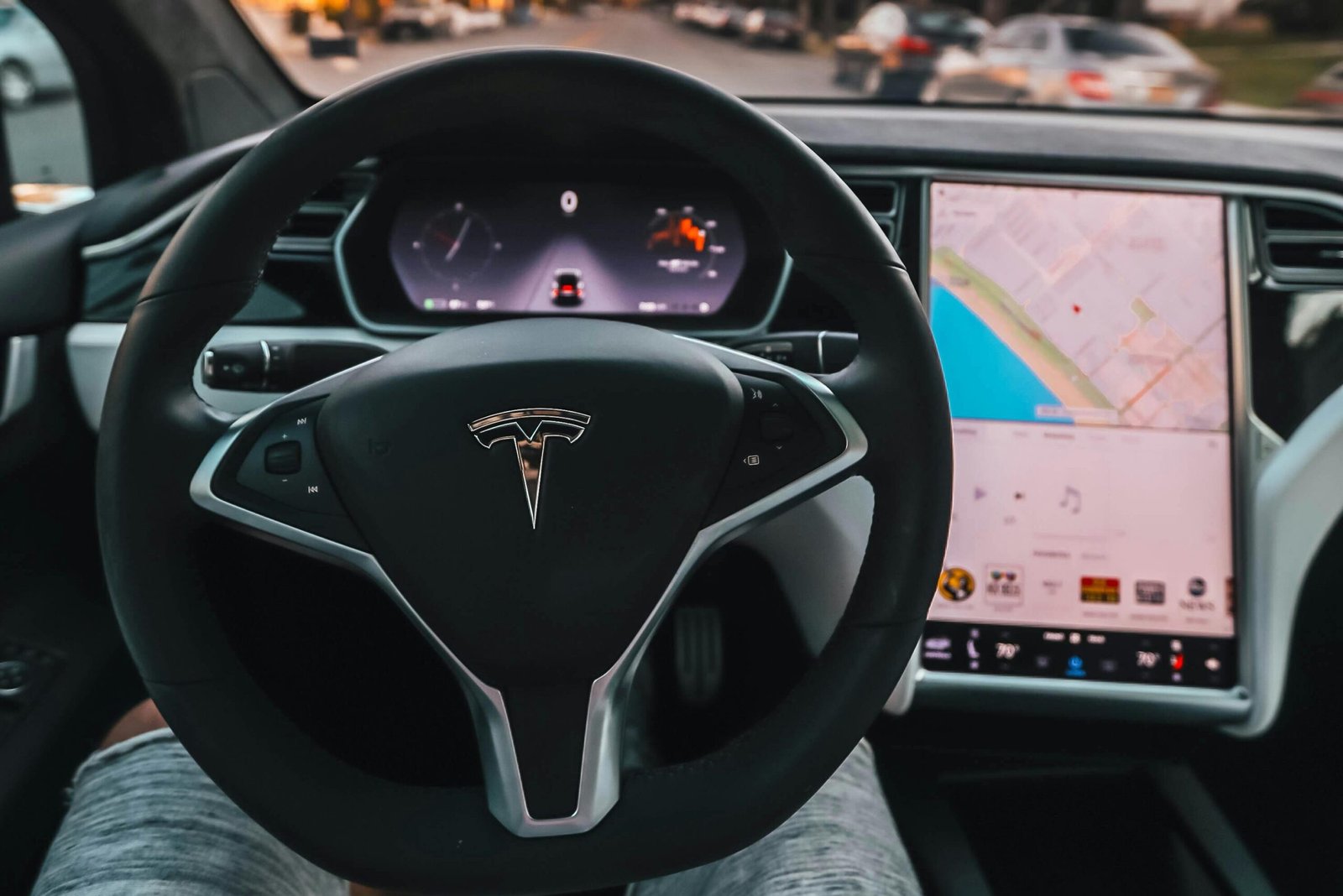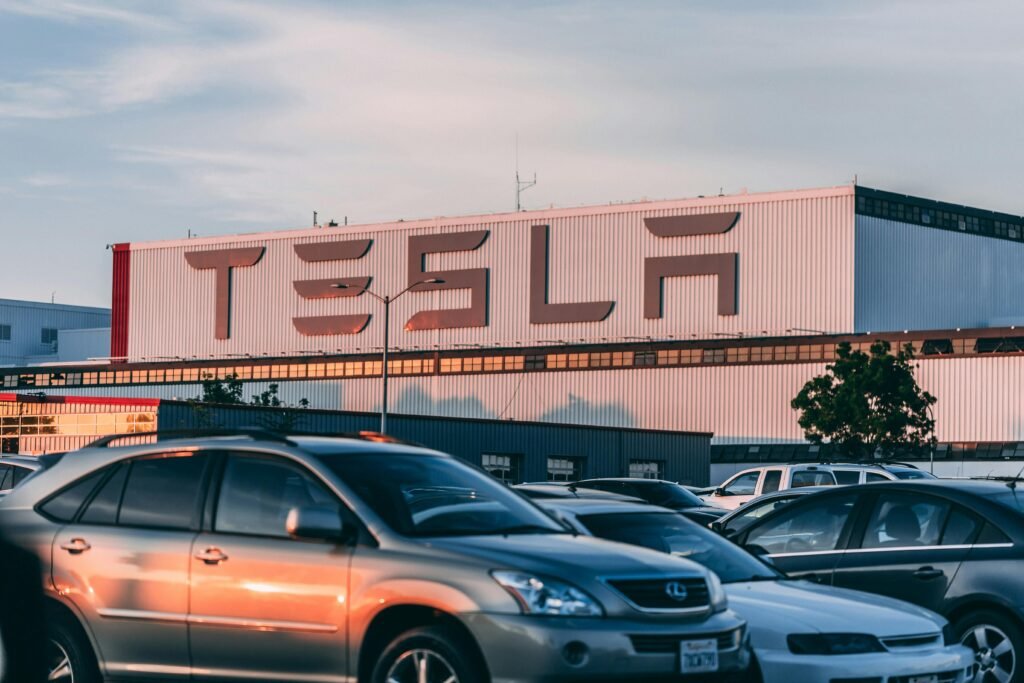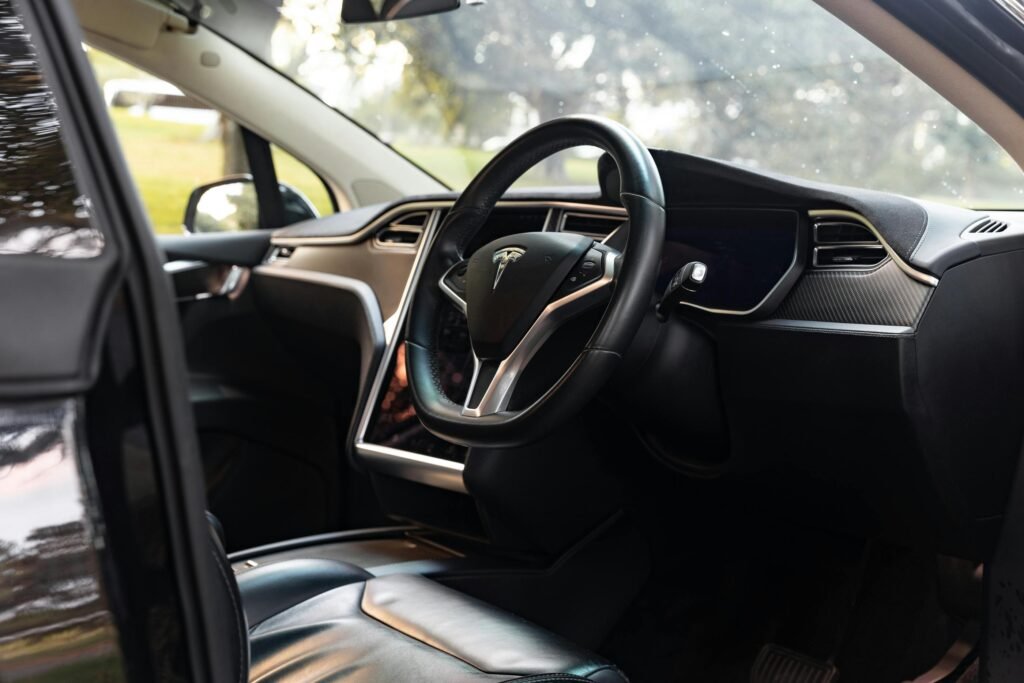Autopilot Isn’t Autonomous, and That’s a Problem

Many Tesla owners and potential buyers still believe that Autopilot is a fully autonomous system, which couldn’t be further from the truth. In fact, Tesla’s own marketing and interface design can often mislead customers into thinking they can take their hands completely off the wheel. This has become one of the most significant challenges in the transition to full self-driving technology. Tesla has advertised its system as “hands-free driving,” yet it’s still labeled as a Level 2 driver-assist feature, meaning it requires constant supervision.
What makes this problematic is the false sense of security it creates. Drivers may think that, since the car is controlling most aspects of the driving experience, they can relax and even multitask. The crash you referenced is a reminder that even when the system works as intended, it’s not foolproof. And, unfortunately, the consequences are often deadly when a driver fails to step in when things go wrong. The tragic part is that the system is evolving faster than our understanding of how to use it safely. These gaps between technology and human behavior are becoming more apparent as more crashes and near-misses occur. Simply put, no amount of fancy tech can replace the need for human caution, particularly when your life is on the line.
The Software Still Struggles with Complex Real-World Situations
Tesla’s Autopilot works well in ideal conditions—clear roads, familiar traffic patterns, and minimal obstacles. But the moment conditions change, such as in bad weather or complex urban environments, the system often fails to adjust accordingly. Imagine a car navigating a busy downtown intersection with pedestrians crossing unpredictably or construction cones disrupting the flow of traffic. These are the types of scenarios that autonomous systems are still struggling to handle.
This issue isn’t limited to Tesla, of course, but the company’s push to roll out self-driving tech before it’s fully ready has put the spotlight on their software’s shortcomings. When Autopilot encounters something unexpected—like an object on the road or another vehicle behaving erratically—it can get confused. While some argue that Tesla’s AI is “learning” and getting better over time, the reality is that there are still too many edge cases where the system doesn’t know how to respond. The lack of flexibility to adjust in real time is a significant concern because those unpredictable situations are precisely when human intervention is most needed. If the car can’t detect an obstacle fast enough, or worse, makes the wrong decision, the consequences could be catastrophic.
Tesla’s Data Transparency Leaves Too Many Questions Unanswered

Tesla’s entire self-driving system is based on a continuous feedback loop of data—constantly recording everything from driving behavior to environmental cues. This data is invaluable for improving the technology, but it’s also highly sensitive. The issue, however, is that Tesla often withholds access to this data when crashes happen. Investigations are left in the dark, with only fragmentary information provided to the public.
When a fatal accident occurs involving Tesla’s Autopilot, the company’s official response is typically to share an abbreviated summary and cast doubt on the role of the system, often blaming the driver for not being attentive. This lack of transparency raises serious questions about accountability. Why should the public only see a few lines of data? What other crucial information might have been left out? Without access to the full dataset, it’s almost impossible to fully understand what went wrong, making it harder for regulators and independent experts to accurately assess the system’s risks. Tesla’s insistence on keeping their data private raises concerns about the company’s commitment to safety and responsibility. What happens when your car collects so much information, yet you don’t get to see the full picture? The trust between consumers and manufacturers starts to erode.
Human Drivers Are Being Trained to Overtrust Automation
The real danger comes when human drivers overestimate the capabilities of Tesla’s Autopilot system. The company’s marketing often blurs the lines between what the car can do and what it’s supposed to do. This ambiguity leads to overconfidence. In fact, studies have shown that once people get used to driving with an autonomous system, their reaction times can worsen, and they become more complacent. They begin to rely on the car too much, trusting it in situations it’s not prepared to handle.
But it’s not just Tesla drivers who are affected by this overconfidence. Other automakers are also rolling out advanced driver assistance systems (ADAS) with similar outcomes. Research shows that people using ADAS systems are more likely to engage in unsafe behaviors like distracted driving or taking their hands off the wheel for longer periods. The illusion of control has a dangerous side effect: it teaches drivers to unlearn vigilance. In a world where the boundaries between human decision-making and machine decision-making are blurred, we need to remind ourselves that humans are still responsible for the outcome. It’s essential that car manufacturers take a step back and rethink how they communicate the capabilities of their systems. It’s not just about selling the dream of autonomous driving; it’s about creating safe and responsible use.
Emergency Situations Still Confuse the System
Autonomous vehicles are good at performing in predictable environments, but emergencies throw them into complete disarray. This is where Tesla’s system, despite its advanced technology, still struggles. The latest crash underscores the reality that while the car might be able to take control in regular driving conditions, it can’t be relied upon in an emergency. There are still gaps in how it perceives hazards and reacts in high-stress situations.
One of the main issues is how the AI interprets complex scenarios, like road closures or sudden maneuvers from other drivers. In such cases, the system often freezes or doesn’t react fast enough. Human drivers, on the other hand, rely on instinct, perception, and experience to make snap decisions in such moments. AI doesn’t have this depth of intuition. While Tesla’s AI system is constantly learning from past experiences, it still lacks the level of cognitive flexibility that a human driver possesses. Even when the software identifies a hazard, it’s not guaranteed to choose the best response. In real-world driving, you don’t always have time for perfect calculations—you have to make decisions fast. And right now, Tesla’s self-driving system isn’t up to the task.
Tesla Drivers Are Caught Between Law and Loyalty
Tesla owners are caught in a strange dilemma: they trust their car, but they’re legally responsible if something goes wrong. Tesla’s branding has made the car seem so autonomous that many drivers, unfortunately, feel less inclined to take control when needed. But the law hasn’t caught up to the technology yet. Tesla drivers are still legally required to maintain control over their vehicle—even when the car takes over significant driving functions.
This creates a legal grey area that’s complicated for both the driver and the company. When a crash happens, Tesla tends to point the finger at the driver, claiming they weren’t attentive enough. But when a driver believes they’re being helped by advanced AI, how can we expect them to react like they’re fully in control? The line between responsible driving and over-reliance on the technology is incredibly thin. Tesla’s constant push to promote its cars as “self-driving” while still requiring human intervention only deepens this confusion.
Crashes Are Becoming Test Cases Instead of Warnings
Each time a Tesla crashes, it’s treated as a learning opportunity by the company. While this is necessary for technological progress, it also means that real people are suffering the consequences of incomplete or imperfect systems. Instead of waiting for the technology to be truly ready for the real world, Tesla has rolled out the system and made each incident part of the “beta test” for the next iteration.
This leads to a dangerous cycle: crashes occur, data is collected, and the system gets updated. But when those crashes involve lives lost, the stakes couldn’t be higher. Many people argue that these crashes should not be considered mere “test cases.” The question is: how many more lives must be put at risk in the name of innovation? And is it ethical for a company to push the boundaries of autonomous driving on public roads while not fully understanding the limits of its technology?
Is Tesla’s “Full Self-Driving” Actually Ready for Prime Time?

Tesla’s promise of full autonomy continues to draw headlines, but with each crash and incident, the question of readiness becomes more urgent. Despite labeling their system as “Full Self-Driving” (FSD), the reality is far from what consumers expect. Tesla’s FSD is still a Level 2 system, which requires active driver supervision. This means it can’t perform fully autonomous driving, and yet, customers are using it as though it can.
The disconnect between marketing and reality is the crux of the problem. Consumers invest in this technology with the expectation that it will soon handle all driving tasks. Yet, they’re left with a semi-autonomous car that still struggles with basic functions like reading stop signs or navigating sharp turns. Tesla has tried to reassure its customers by promising regular software updates, but the reality is that these updates are nowhere near a quick fix for the deeper challenges of true autonomy. The company has yet to present a roadmap that leads to full autonomy in a safe, reliable way. As we’ve seen from the latest crashes, the system is not ready to operate without human intervention. Until Tesla can prove that its Full Self-Driving is truly safe and reliable, it’s hard to argue that the technology is ready for widespread use.
The Risks of a “Beta-Tested” Future
Tesla’s approach to innovation often involves “beta testing” its vehicles on public roads, with real customers acting as unwitting participants in this experimental phase. This process, while necessary to gather real-world data, raises significant ethical questions. When people purchase a car with the expectation that it’s safe and roadworthy, they’re often unaware that their car is, in fact, still undergoing real-time testing.
Beta testing in the context of autonomous vehicles is risky because it involves not just the car itself, but the safety of its driver and others on the road. For example, when a self-driving car experiences an accident due to a software flaw, the consequences are far more serious than a simple app crash. Lives are at stake. Consumers shouldn’t be seen as “test pilots” for cutting-edge technology, especially when the stakes are so high. Tesla’s approach could be considered too experimental for a product that’s already on the road, and the lack of proper oversight or transparency makes this situation even worse. While Tesla may argue that the data gathered from these crashes helps improve the system, it’s unclear how much longer we can afford to test autonomy at the expense of human lives.
Is Tesla Truly Prioritizing Safety Over Speed?
One of the most concerning aspects of Tesla’s self-driving push is the speed at which they’re releasing updates and pushing new features. While the company deserves credit for advancing autonomous technology at a rapid pace, safety seems to be taking a back seat to ambition. Tesla is known for its “over-the-air” software updates, which allow the company to roll out improvements without needing to physically access the car. This is a great advantage—except when those updates are being rushed out to meet customer demand or the company’s quarterly goals.
Tesla has a track record of releasing features that haven’t been fully tested in real-world conditions. The “Full Self-Driving” mode, for example, was introduced before it was ready, and the system’s failures in various accident reports suggest it’s still not safe to operate without driver oversight. While some might argue that Tesla is pushing the boundaries of what’s possible in terms of innovation, the question remains whether they’re doing so responsibly. As recent crashes have shown, this rush to innovate can result in tragic consequences, and it’s becoming increasingly clear that Tesla needs to slow down and ensure its technology is thoroughly tested before it’s released to the public.
Regulatory Gaps Are Allowing Dangerous Tech to Hit the Road
The U.S. government’s regulatory approach to self-driving cars has been slow and often reactive. Tesla has often been able to push out new features and updates with little oversight from regulators, leaving the public to deal with the consequences. The National Highway Traffic Safety Administration (NHTSA) has launched investigations into Tesla accidents involving Autopilot, but there’s no clear framework for ensuring that the system is 100% safe before it’s deployed.
One of the issues with the current regulatory environment is that there are few clear standards for how to test self-driving technology on public roads. This leaves companies like Tesla with a great deal of freedom to experiment and release new tech, even if it’s not fully ready for everyday use. And while Tesla is undoubtedly at the forefront of autonomous vehicle technology, the lack of clear guidelines creates a chaotic and unsafe environment for consumers. Until we have stronger regulations in place that ensure autonomous systems meet minimum safety standards before they hit the market, we may continue to see preventable crashes—and more lives lost.
Tesla’s Human-Machine Interaction Is Still a Wildcard
One of the biggest challenges facing Tesla’s Autopilot system is the interaction between humans and machines. While Tesla has made strides in developing sophisticated AI systems, the relationship between the driver and the car is still unpredictable. In many crashes involving Autopilot, the driver was either distracted or didn’t react in time, but this raises the question: why did the driver feel comfortable trusting the system in the first place?
Tesla’s design philosophy encourages drivers to let their guard down. The car’s sleek interface, combined with frequent promises of future updates, creates an illusion that the system will soon be able to function independently of human input. But the reality is that drivers often engage with the system in ways they shouldn’t—either by checking their phones, taking their hands off the wheel, or simply trusting that the car can handle it. When things go wrong, the human component of the system is left to pick up the pieces. But how can we expect a human to react appropriately when they’ve been trained to trust a system that isn’t quite ready for full autonomy? Until there’s a clearer and safer interaction between human drivers and the cars they drive, this relationship will continue to be a wildcard.
The Future of Self-Driving Cars: Will the Technology Ever Be Truly Safe?
As Tesla and other companies continue to pour resources into self-driving technology, the question remains: will it ever be truly safe? While we’ve seen massive advancements in AI and machine learning, autonomous driving still faces significant hurdles. The technology may work well in controlled environments, but real-world driving is chaotic and unpredictable. The introduction of more sophisticated sensors and cameras has improved detection, but the complexity of human behavior on the road remains a challenge for any AI system to navigate fully.
Furthermore, as AI-driven systems become more complex, the possibility for hidden bugs or malfunctions increases. Every new feature or software update brings with it potential new risks. In the end, the real question isn’t just about technical perfection—it’s about managing the inherent risks of a system that requires human oversight but has been marketed as ready to replace human drivers. Until self-driving technology is guaranteed to perform safely in all conditions, the technology may never be truly ready for widespread use. As it stands, the dream of autonomous driving is a long way from becoming a reality that everyone can trust.
